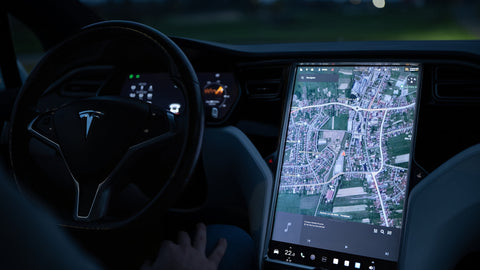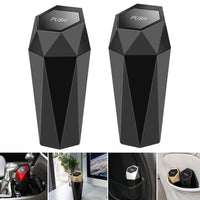A Guide to Relieving and Avoiding Tesla EV Headaches!
Many vehicle aficionados fantasize about owning a Tesla. Among the many distinguishing features of Tesla EVs are their unique technology, thrilling performance, and streamlined appearance. However several Tesla drivers have complained of headaches after getting behind the wheel. You shouldn't allow this to dampen your enthusiasm for Tesla. In this article, we will discuss what might go wrong with a Tesla EV and how to fix it or avoid it in the future.
Enjoy state-of-the-art technology, eco-friendly transportation, and a taste of the future of mobility when you become the proud owner of a Tesla electric vehicle (EV). Tesla's, however, are not invincible to the inevitable problems that eventually arise with every complicated system. In this article, we will discuss typical issues with Tesla EVs, how to fix them, and what you can do to avoid them in the future so that you have a good time driving your new car.
Range anxiety can be an issue for Tesla owners — though it's the best EV when it comes to charging
Anxieties about the battery dying too soon, or range anxiety, is a major problem for electric vehicle owners. Find out how far your Tesla can go on a single charge, incorporate charging stations into your route planning, and make use of tools like Tesla's Trip Planner to overcome this challenge. Learning your vehicle's energy consumption trends and adjusting your trip plans appropriately are good preventative measures.

Problems with Software and Updates:
Tesla's has a reputation for regularly releasing new features and enhancements through over-the-air software updates. Nevertheless, system faults can happen from time to time due to bugs. To get over this problem, you need to keep your Tesla software up-to-date and notify Tesla's customer service right away if you encounter any problems. Keeping up with software upgrades can frequently avert possible problems, so prevention is crucial in this case.

Problems with Charging:
Having access to a reliable charging network is essential for electric vehicle users, and Tesla has a vast network of Superchargers. However, problems with third-party charging networks or overcrowded charging stations are still possible. To get around this, you should include charging stations in your route planning and make sure to include backup charging choices in your itinerary. Using Tesla's charging planning capabilities and keeping yourself updated on the Supercharger network's expansion are two ways to prevent this.

Hardware problems
While Tesla's are known for their dependability, hardware problems can happen from time to time. Immediate contact with Tesla's service personnel and utilization of warranties for required repairs are key to resolving this issue. Tyre rotations and brake pad checks are two examples of routine maintenance that may keep your Tesla running smoothly and free of hardware problems.
Tesla owners say they're disappointed with the company's Full Self-Driving software
Although both Tesla's Autopilot and its Full Self-Driving capabilities are state-of-the-art, they do have certain restrictions. To get around this, you need to pay close attention and be aware of what these features can do right now. To avoid problems, keep up with the latest news and regulations pertaining to autonomous driving systems, and make sure you're knowledgeable about software updates that improve Autopilot's effectiveness.
Possible Persons at Fault:
There are several potential causes of headaches experienced by Tesla drivers:
Electromagnetic fields (EMFs): Due to their high-tech content, Teslas may cause headaches in people who are sensitive to EMFs produced by electronics.
Some people may experience headaches as a result of the car's interior materials, such as the new car scent, off-gassing from the materials, or even vegan leather seats.
Air quality: Headaches, particularly on lengthy rides, might be caused by stale air or a cabin that isn't well-ventilated.
Ergonomics: Posture-related issues, such as a tight neck from staring at the center touchscreen for too long, might aggravate headaches.
Driving can make headaches worse, but there are other individual variables that might trigger headaches as well, such as stress, dehydration, or preexisting medical issues.
Overcoming the Pain:
No need to freak out if you get a headache while driving your Tesla! Take a look at these suggestions:
Find a posture that's easy on your neck and back, and then adjust your seat accordingly. Feel free to experiment with the headrest and lumbar support.
Keep your eyes on the road and the central touchscreen at a minimum by taking frequent rests. Think about doing certain things by speaking commands.
Water is essential for proper hydration, so make sure you drink enough of it before, during, and after riding.
Reduce tension by calming yourself with deep breathing exercises or meditation before you hit the road.
Go to the doctor: Seek medical attention to rule out serious medical issues if headaches continue or worsen.
Headache Prevention:
When you know what's triggering your headaches, you can take measures to avoid them:
To reduce off-gassing, choose environmentally friendly materials and specify "low odor" inside when ordering a Tesla.
Keep the windows open for a few minutes before getting in the car, particularly on hot days, to let in some fresh air.
The air quality in the driver-side cabin can be improved by investing in a portable air purifier.
Maintain an upright posture: Keep your neck and back in a neutral position and get up and move around every so often while driving.
Use EMF shields or take pauses from utilizing the touchscreen functions to reduce your exposure to electromagnetic fields.
Keep in mind that you can't generalize about people and their needs; what helps some may hurt others. Find out what works best for you by trying out different techniques, and then you can drive your Tesla without any problems!
Bonus Tip: To alleviate headaches caused by the abrupt surge of power, several Tesla owners have found that activating the "Chill Mode" acceleration setting helps. This option offers a more gradual acceleration, which could be less taxing on your brain.
If you follow these guidelines, you should have no trouble with your Tesla EV and will be able to drive your electric dream automobile with complete peace of mind.
"Unveiling the Unseen Costs and Surprising Insights of Electric Vehicle Ownership"
Electric Vehicle Ownership: The Fascinating (and Sometimes Startling) Truth Thanks to their cutting-edge technology, stylish looks, and positive impact on the environment, electric vehicles (EVs) are booming in popularity. Be mindful of the possible downsides of EVs before you go on the EV adoption bandwagon. Three factors should be taken into account:
EV owners can also face higher insurance rates
Despite electric vehicles' lower crash rates compared to gas-powered vehicles, insurance companies may charge more to cover their costly repairs. Insurance companies factor in the high cost of repairs for electric vehicles due to the modern materials and intricate technology employed in these vehicles. Also, some drivers can be tempted to overuse an electric vehicle's strong acceleration, which increases the likelihood of accidents and, in turn, insurance companies' rate hikes.
At-home chargers can add to the initial cost of buying an EV
You may say goodbye to trips to the petrol station once you acquire an electric vehicle, but if you want to charge your battery overnight, you'll need to set up a charging station at your house. Depending on the features and the cost of installation, these chargers can cost anywhere from $250 to $1,500. Also, public charging stations can end up being less expensive than charging at home, depending on your power prices.
When you buy a Tesla, you might want to read the instruction manual, owners say
The modern design and state-of-the-art technologies of Tesla vehicles are instantly recognizable. On the other hand, new owners may become confused because of this. For people who aren't familiar with the system, several Tesla features, such as the center touchscreen that controls the heat and navigation, can be confusing. You can avoid a lot of hassle (and maybe some awkward moments) by reading the handbook and getting to know the car's controls before you go on a road trip.

Looking Beyond the News: A Reasonable Viewpoint
Keep in mind that these are but a few of the possible negative aspects of owning an electric vehicle. You should also think about the many advantages of electric cars, such as:
Compared to other forms of transportation, electric vehicles have a smaller impact on the world and the environment because they don't release any harmful pollutants.
Ultimately, you'll save money on fuel because electricity is typically less expensive than gasoline.
To get customers to help with the initial investment, several governments provide financial incentives in the form of tax credits and rebates for the purchase of electric vehicles.
Driving an electric vehicle (EV) is a thrilling experience because of its responsive steering and rapid acceleration.
Reduced maintenance expenses: Compared to gas-powered vehicles, electric vehicles have fewer moving components, making them easier to clean and fix.
Who gets to decide? In the end, it's just up to the individual. Do your homework and think about the benefits and drawbacks to be sure it's the best option for you. Remember to read the instructions (particularly if you're purchasing a model of a Tesla!) before you jump in.
Navigating the Autonomous Revolution: Elon Musk's Tesla Model 3 Paves the Way for Automotive Innovation in Silicon Valley
In the realm of autonomous vehicles, Tesla CEO Elon Musk stands as a visionary force, pushing the boundaries of innovation. With the Tesla Model 3 leading the charge, automotive engineers in Silicon Valley are tirelessly working on refining battery life and self-driving capabilities. The Tesla Network envisioned as a ride-sharing platform, awaits mass adoption, promising a future where cars seamlessly navigate city streets without human intervention. Beta testers of Tesla's Full Self-Driving (FSD) feature play a crucial role in shaping the technology's evolution, providing real-world insights to enhance its efficacy. As Elon Musk's ambitious vision unfolds, the convergence of cutting-edge technology and automotive expertise marks a pivotal era in the automotive industry's journey toward widespread autonomy.
Conclusion
In sum, driving a Tesla EV is an amazing life-changing adventure, but it's not without its difficulties. A more pleasant experience is possible if you anticipate and conquer typical difficulties, such as those associated with software, charging, range anxiety, hardware, and Autopilot's limits. By taking proactive steps, keeping yourself updated, and actively participating in the Tesla community, you can improve your ownership experience and help shape the future of electric automobiles. Some Tesla owners say they've noticed quality-control issues over the years. You may enjoy the exceptional innovation and sustainability that come with being a Tesla owner by proactively addressing Tesla EV drivers' issues.
 :
:  :
: 
















